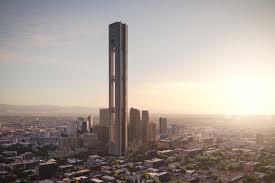
Breaking News
 Erika Kirk shares update after private in-person meeting with Candace Owens
Erika Kirk shares update after private in-person meeting with Candace Owens
 Candace Owens Reacts to Erika Kirk's Interviews and Comments about Questioning TPUSA
Candace Owens Reacts to Erika Kirk's Interviews and Comments about Questioning TPUSA
 Bank of America just leaked their report to institutional clients.
Bank of America just leaked their report to institutional clients.
 IDEAL HUB TO KICK OFF THE GRAND PLAN: BIRTH OF "USAMERICAS"
IDEAL HUB TO KICK OFF THE GRAND PLAN: BIRTH OF "USAMERICAS"
Top Tech News
 This tiny dev board is packed with features for ambitious makers
This tiny dev board is packed with features for ambitious makers
 Scientists Discover Gel to Regrow Tooth Enamel
Scientists Discover Gel to Regrow Tooth Enamel
 Vitamin C and Dandelion Root Killing Cancer Cells -- as Former CDC Director Calls for COVID-19...
Vitamin C and Dandelion Root Killing Cancer Cells -- as Former CDC Director Calls for COVID-19...
 Galactic Brain: US firm plans space-based data centers, power grid to challenge China
Galactic Brain: US firm plans space-based data centers, power grid to challenge China
 A microbial cleanup for glyphosate just earned a patent. Here's why that matters
A microbial cleanup for glyphosate just earned a patent. Here's why that matters
 Japan Breaks Internet Speed Record with 5 Million Times Faster Data Transfer
Japan Breaks Internet Speed Record with 5 Million Times Faster Data Transfer
 Advanced Propulsion Resources Part 1 of 2
Advanced Propulsion Resources Part 1 of 2
 PulsarFusion a forward-thinking UK aerospace company, is pushing the boundaries of space travel...
PulsarFusion a forward-thinking UK aerospace company, is pushing the boundaries of space travel...
 Dinky little laser box throws big-screen entertainment from inches away
Dinky little laser box throws big-screen entertainment from inches away
 'World's first' sodium-ion flashlight shines bright even at -40 ºF
'World's first' sodium-ion flashlight shines bright even at -40 ºF
Kilometer-tall skyscrapers to double as massive batteries

Skidmore, Owings & Merrill (SOM), the designer of the world's tallest building, Dubai's Burj Khalifa, has joined forces with Energy Vault Holdings to investigate the possibility of creating something even taller: huge 1-km [3,280-ft]-tall skyscrapers that would also function as gigantic gravity based energy storage systems.
The proposal features two particularly notable ideas. The first brings to mind research from the likes of Gravitricity and IISA, and would use excess energy – whether from renewable sources like solar or from a standard power grid – to raise a weight up to the top of a very tall skyscraper. When required, the weight is then released, allowing it to descend to the bottom of the building, harnessing the force of gravity to drive a generator.



